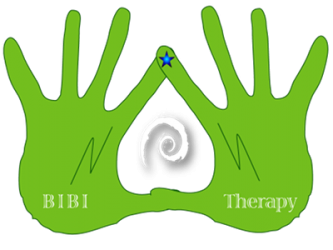The legends say that once upon a time, bay leaves were used to repel demons, witches, lightning and thunder. It is said that the great Tiberius Caesar Augustus, the second Roman Emperor (reined from AD 14 to 37) had a bay leaf hat to protect him from lightning. Most commonly bay leaves come from an ancient evergreen tree native to the Mediterranean region called Laurus nobilis.
This herb has been around since ancient times and has been used as food flavouring as well as medicinal remedy. The herb is associated with prosperity, honour and fame and has many other ritualistic uses, including protection from misfortune, purification, meditation, accessing higher creative powers, etc. Most importantly this herb lists impressive health benefits in the folk medicine that are yet to be validated by modern medicine.
Harnessing the beneficial effects of bay leaf is easier than one might think in Australia. That is because Bay tree is so easy to grow in pots or garden, but be warned it requires constant pruning.
The leaves are rich in vitamins (specifically vitamin A and C) and minerals including copper, potassium, calcium, magnesium, zinc, iron, selenium and manganese. Furthermore, the leaves contain tannins, flavones, flavonoids, alkaloids, eugenol, linalool, methyl chavicol, and anthocyanins (Batool et al, 2020). Here’s what modern research tells us about bay leaves benefits:
- May Improve Lipid Metabolism in Type 2 Diabetes: Just one or 2 grams a day for a minimum of 10 days is able to help decrease risk factors for diabetes and cardiovascular diseases for people with type 2 diabetes. (Khan et al, 2009);
- May Help Fight Stomach and Duodenal Ulcers: an aqueous extract of bay leaf is as effective as ginger, and nigella in fighting against bacteria (commonly Helicobacter Pyloriis) known to lead to stomach ulcer (Biglar et al, 2014);
- Could be useful in wound healing preventing fungal infections: the essential oil from bay leaves has been efficient in combating fungal infections (Candida albicans biofilms) (Freires et al, 2016).
Throughout the history bay leaf has also known for other biological activities including:
- As a poultice to help with wound healing,
- As a topical application of the oil to ease the arthritic pain,
- Bug repellent,
- Vapour treatment in chest and viral infections,
- Commonly used in cosmetic creams, perfumes, hair conditioner and soaps.
Bay Leaf Tea
Bay leaf tea is delicious; I love the aromatic fragrance that the leaves release when I make the tea. A coup of bay leaf tea can soothe and relax the body. After work or a stressful day and before bedtime the tea will help you getting into the “zzzzzzzzz” mode in no time. Bay leaf is not a morning tea: save it for the afternoon or evening. The tea should be consumed with caution, as it is known to have some slight narcotic qualities slowing down the central nervous system (Batool et al, 2020).
- One litre water;
- 5 bay leaves;
- Juice of one large lemon;
- Place ingredients, together, in a pot and bring to a boil. Boil until the liquid reduces to half.
- Strain and add the lemon juice.
- Drink the tea after it cools down.
Hair Conditioner. The bay leaf tea can also be used as your best hair conditioner: it will add extra shine to the hair. Use the tea after shampooing your hair.
Safety: If you have a bay leaf tree always make the tea from dried leaves. Fresh Bay leaves have a pungent and bitter taste and should only be used for food flavouring or tea 48 to 72 hours after being harvested. Although, there is insufficient data about the safety of taking bay leaf in pregnancy and breastfeeding it is most probably better to avoid its use during this period.
Ground bay leaf is considered safe when taken in medicinal quantities, less than ¾ of a teaspoon or approximately 3 grams a day, and for a short period (up to maximum 40 days). But, if you cook with whole bay leaf, you must remove it before eating the food. Bay leaf cannot be digested and remains intact in the digestive tract and it may cause piercing of the lining of the intestines.
Final thoughts
Most of the studies I found in my research refer to either in-vitro or testing of bay leaf extracts. As scientific research progresses, we may be able to find out how the savoury leaf makes the jump from being used just as flavouring agent to human medical benefits.
As with all natural products one must manifest caution when embarking on the use of bay leaf for its medicinal properties. When in doubt it is always better to consult and experienced and qualified professional if you feel that your ill-health symptoms require in depth attention.
I would love to hear from you about how you use Bay leaf in your daily life, or if you have any questions please write in the comments below.
References
Batool, S., Khera, R. A., Hanif, M. A., & Ayub, M. A. (2020). Bay Leaf. Medicinal Plants of South Asia, 63–74. https://doi.org/10.1016/B978-0-08-102659-5.00005-7
Biglar, M., Sufi, H., Bagherzadeh, K., Amanlou, M., & Mojab, F. (2014). Screening of 20 commonly used Iranian traditional medicinal plants against urease. Iranian journal of pharmaceutical research : IJPR, 13(Suppl), 195–198. https://www.ncbi.nlm.nih.gov/pmc/articles/PMC3977070/#__ffn_sectitle
Peixoto, L. R., Rosalen, P. L., Ferreira, G. L., Freires, I. A., de Carvalho, F. G., Castellano, L. R., & de Castro, R. D. (2017). Antifungal activity, mode of action and anti-biofilm effects of Laurus nobilis Linnaeus essential oil against Candida spp. Archives of oral biology, 73, 179–185. https://doi.org/10.1016/j.archoralbio.2016.10.013
Khan, A., Zaman, G., & Anderson, R. A. (2009). Bay leaves improve glucose and lipid profile of people with type 2 diabetes. Journal of clinical biochemistry and nutrition, 44(1), 52–56. https://doi.org/10.3164/jcbn.08-188

